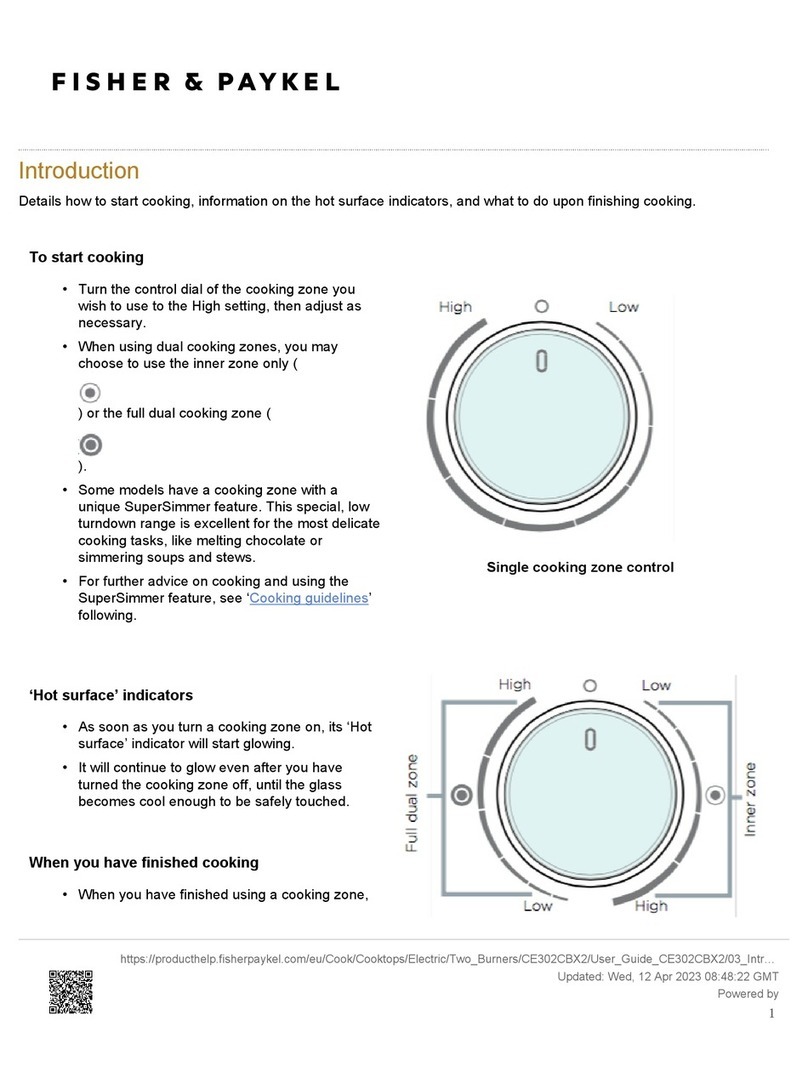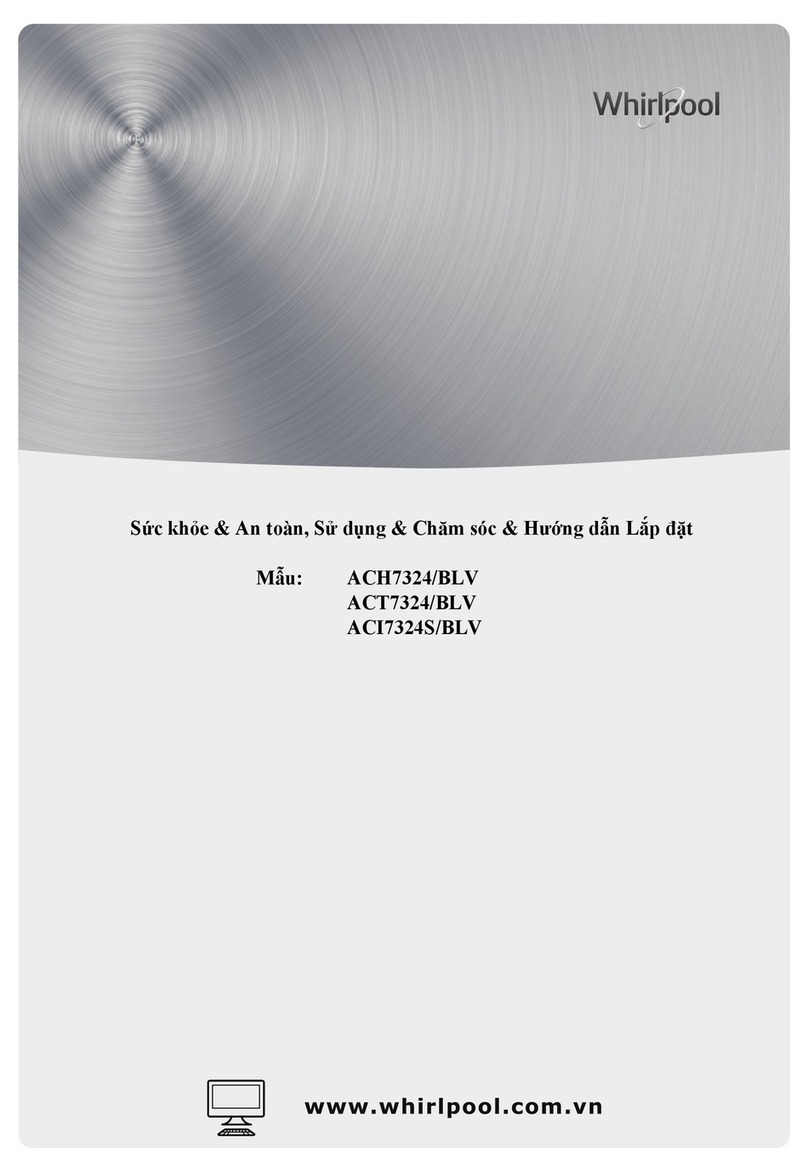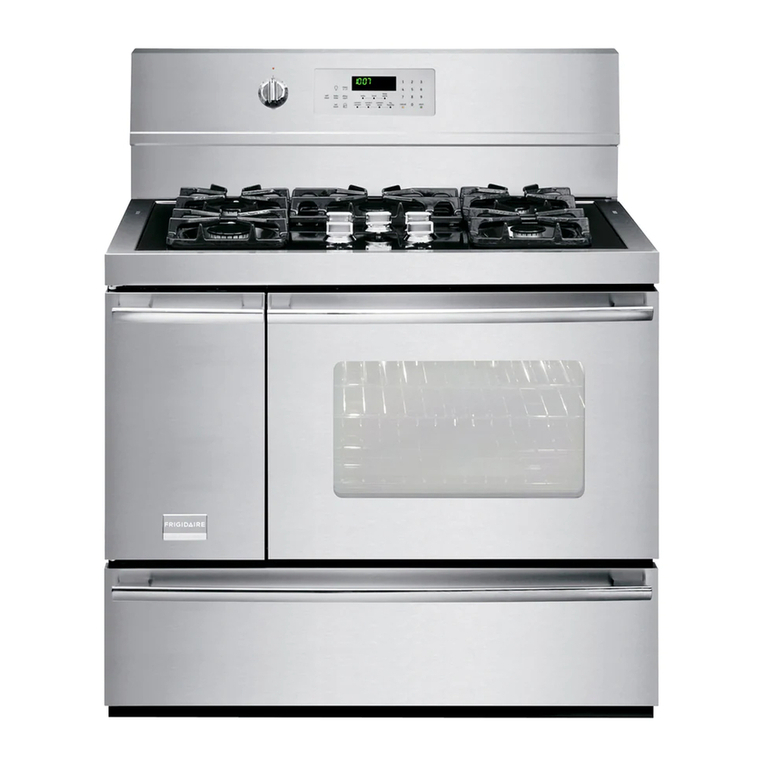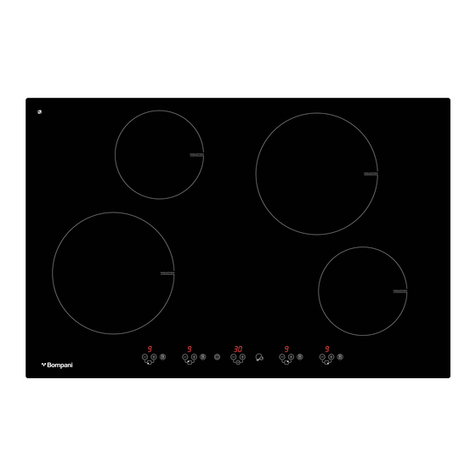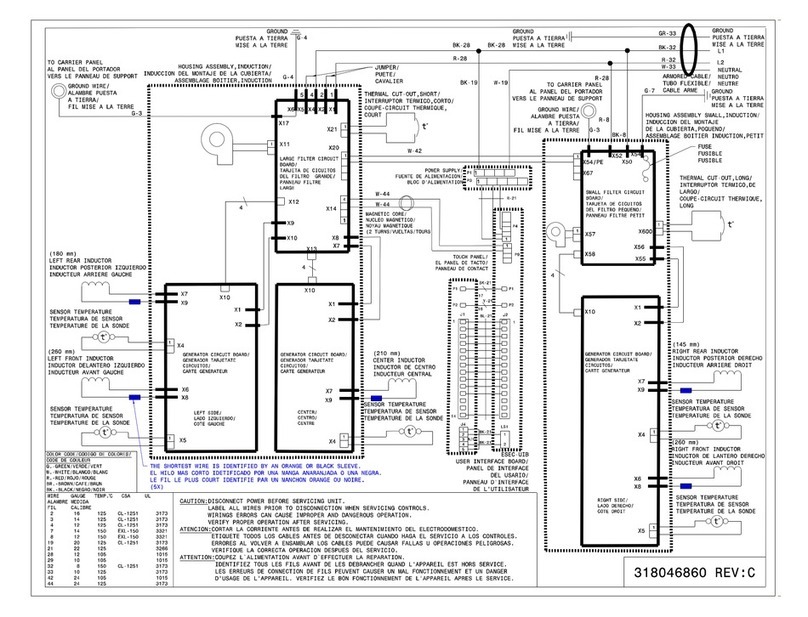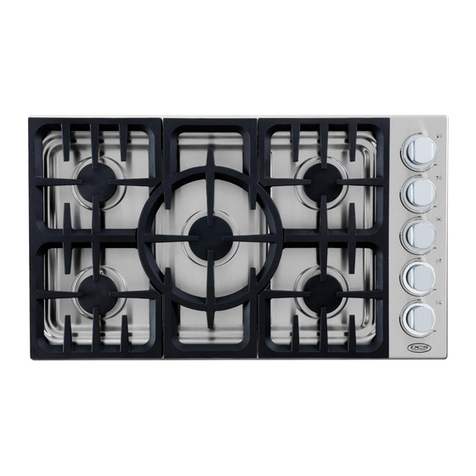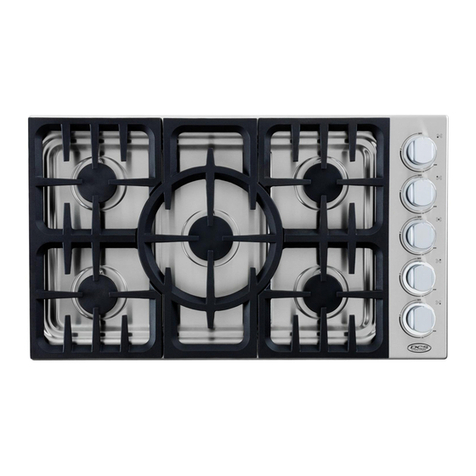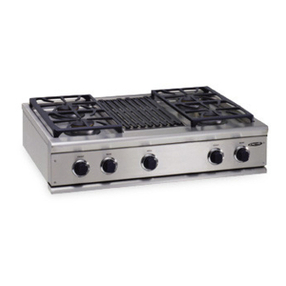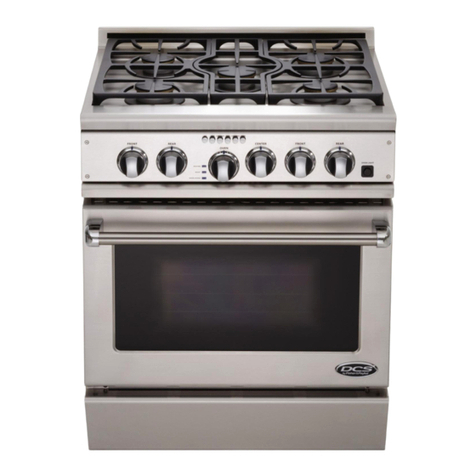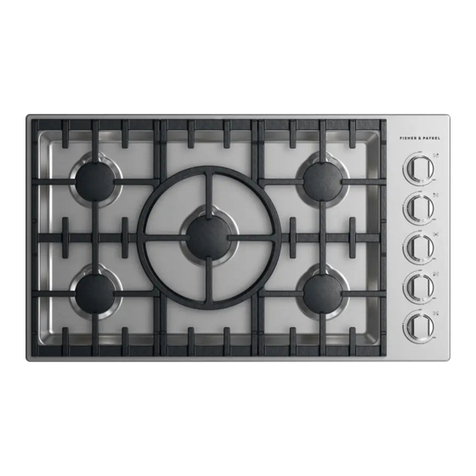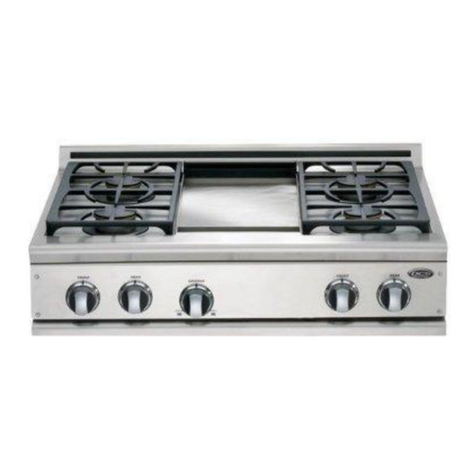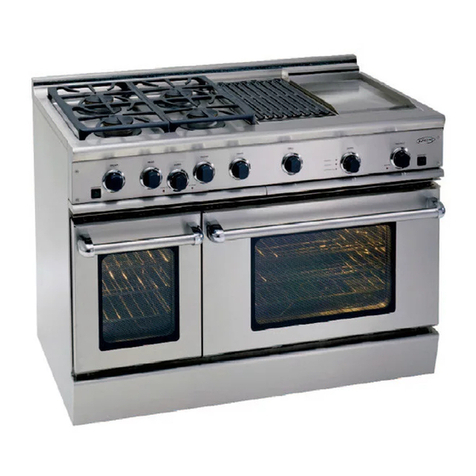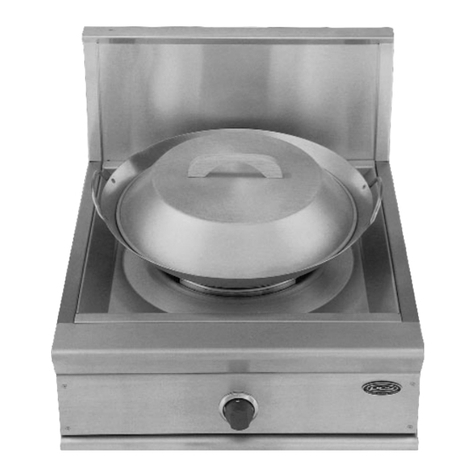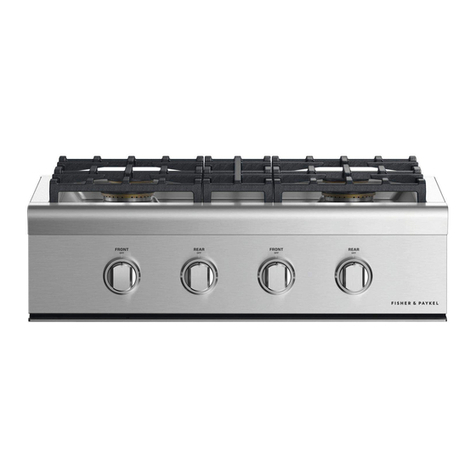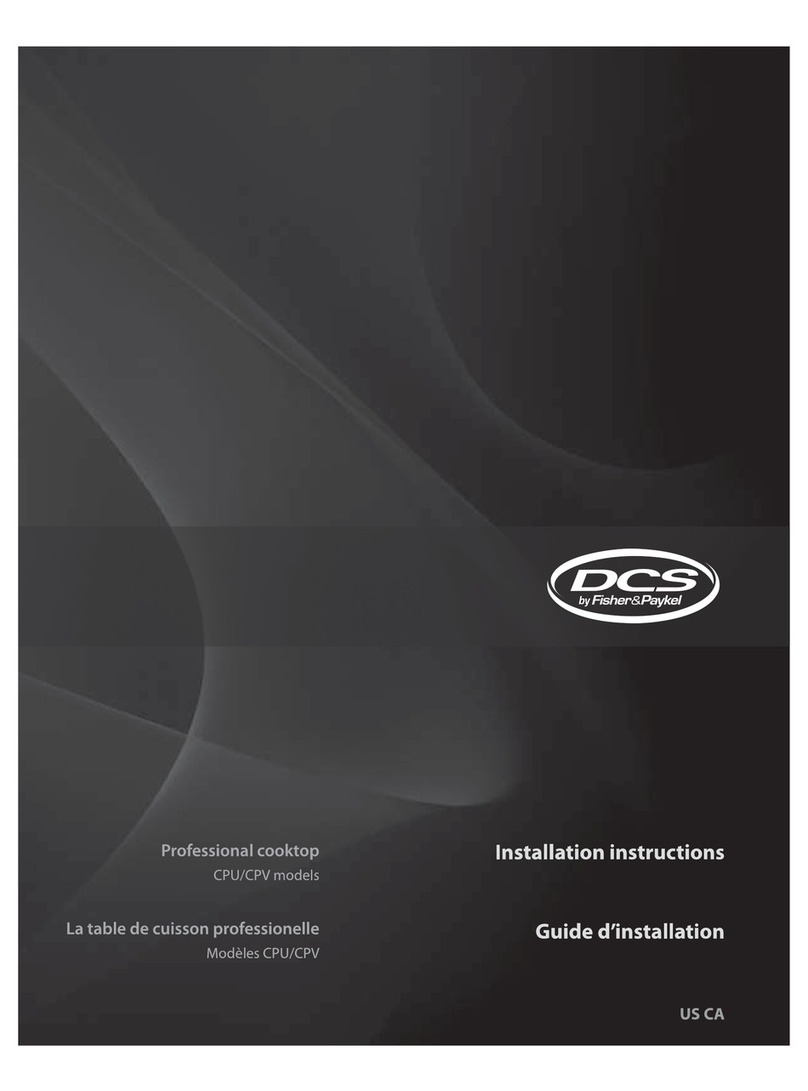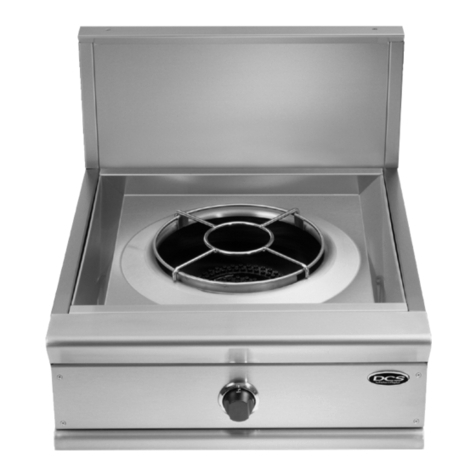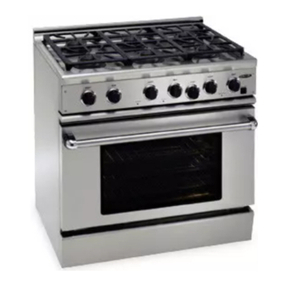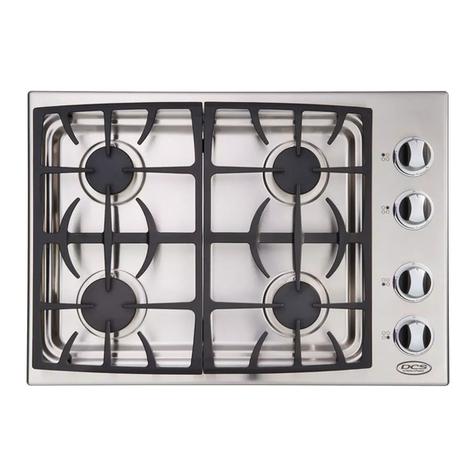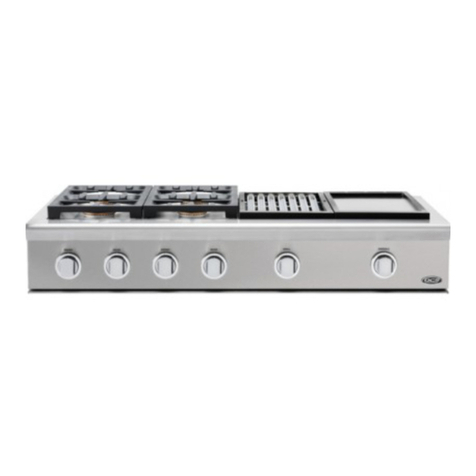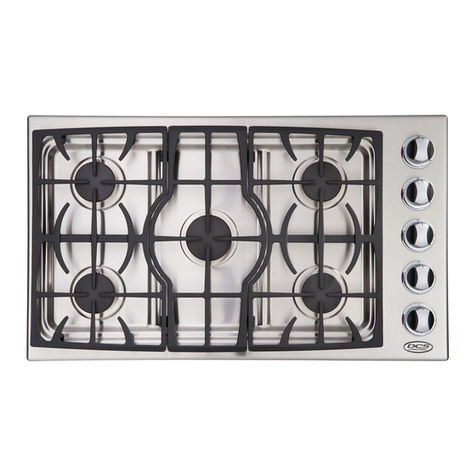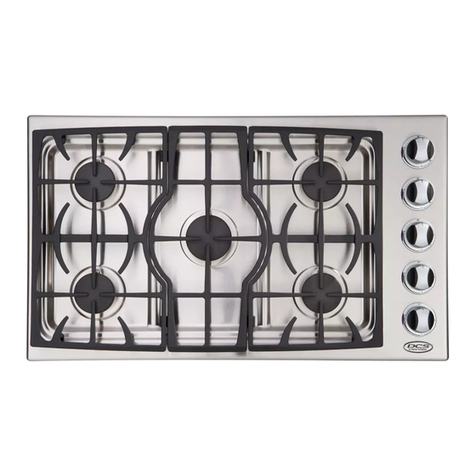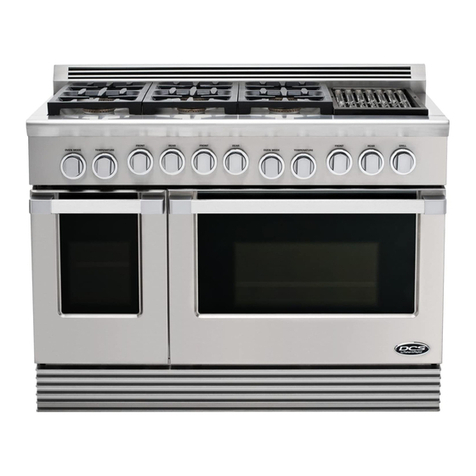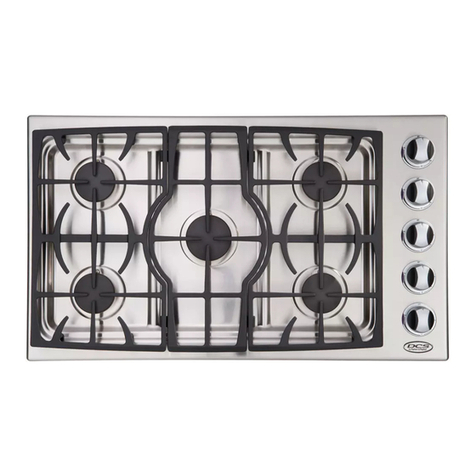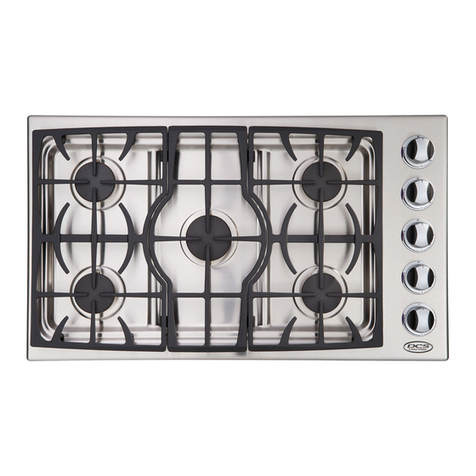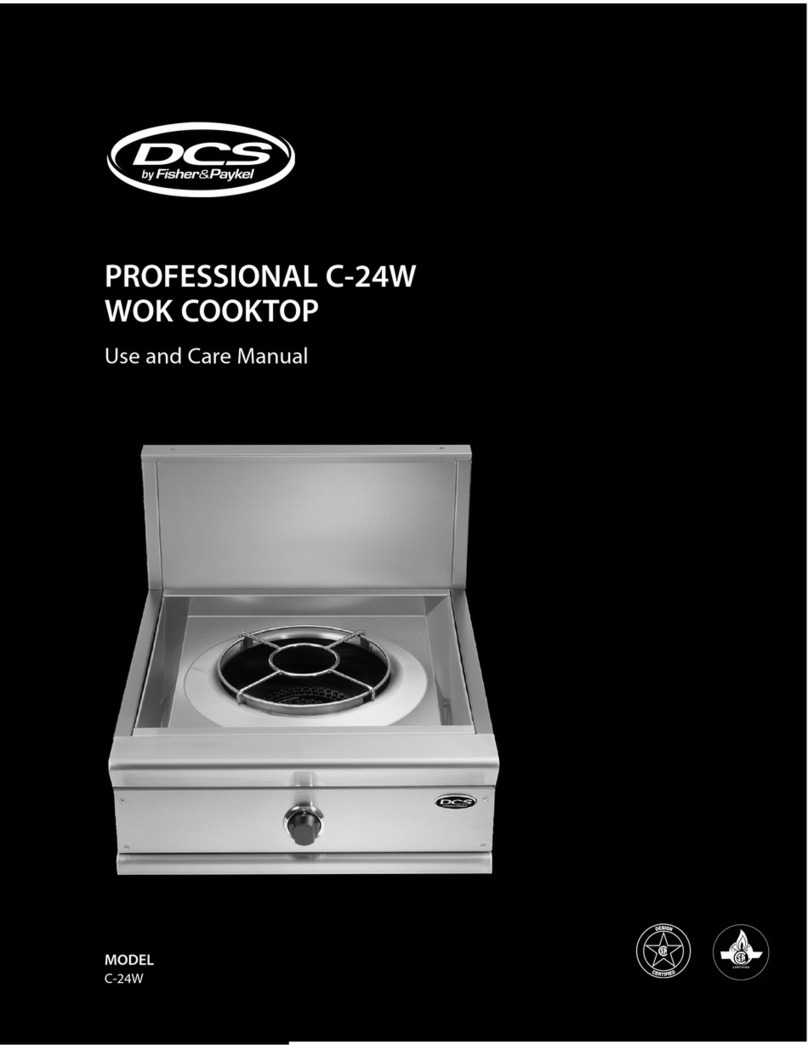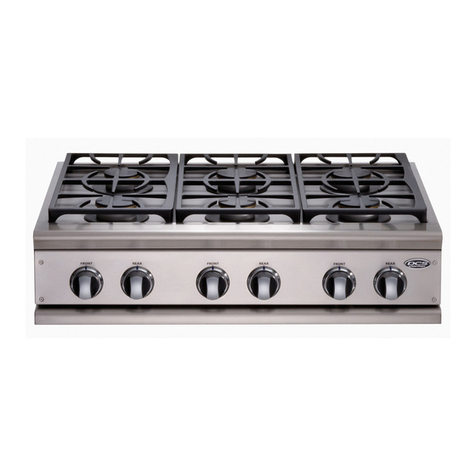
PRELIMINARY
•Do not use water on grease fires. Turn all
burners OFF, then smother fire with baking
soda or use a dry chemical or foam-type fire
extinguisher.
•Never let clothing,pot holders,or other flam-
mable materials come in contact with, or too
close to any burner or burner grate until it has
cooled. Fabrics may ignite and result in per-
sonal injury.
•Be certain to use only dry pot holders; moist
or damp pot holders on hot surfaces may
cause burn injury from steam. Do not use a
towel or other bulky cloth in place of pot
holders. Do not let pot holders touch hot
burners, or burner grates.
•For personal safety, wear proper apparel.
Loose fitting garments or hanging sleeves
should never be worn while using this appli-
ance. Some synthetic fabrics are highly flam-
mable and should not be worn while cook-
ing.
•Do not use aluminum foil to line any part of
the cooktop. Using a foil liner could result in
a fire hazard.
WARNING:
This appliance is for cooking. Based on
safety considerations, never use the
cooktop to warm or heat a room.
•When using the cooktop: Do not touch the
burner grates or the immediate surround-
ing area. Areas adjacent to the burners may
become hot enough to cause burns.
•Never leave the cooktop unattended when
using high flame settings. A possible boil
over could cause smoking or greasy spillovers
may ignite. More importantly, if the burner
flames are smothered by a severe boil over
which effects the igniter, the unburned gas
will escape into the room, which would be
extremely dangerous.
•Only certain types of glass, heatproof glass-
ceramic, ceramic, earthen ware, or other
glazed utensils are suitable for use on the
open flame of the cooktop. Utensils that are
not thermally heat safe may break with sud-
den temperature changes.
•Do not heat unopened food containers; a
build up of pressure may cause the container
to burst.
•During cooking,set the burner control so that
the flame heats at the bottom of the pan and
does not curl around the bottom edges of the
pan.This could heat and/or melt the handles.
•Always use utensils that have flat bottoms
large enough to cover the burner. The use of
undersized utensils will expose a portion of
the flame to direct contact and may result in
ignition of clothing.
•To minimize burns,ignition of flammable ma-
terials and accidental spillovers, position
handles of utensils inward so they do not ex-
tend over adjacent work areas,cooking areas,
or the outside edges of the cooktop.
•Hold the handle of the pan to prevent move-
ment of the utensil when stirring or turning
food.
•Grease is flammable. Do not use water on
grease fires. Turn OFF the burner, then
smother the fire with baking soda or use a dry
chemical or foam-type fire extinguisher. Let
hot grease cool before attempting to handle
it. Avoid letting grease deposits collect
around the base of the cooktop burners.
Clean after each use or boil over.
•Use splatter screens over pans when frying
foods to minimize possible grease burns. Be
sure not to use a flame that is too high.
